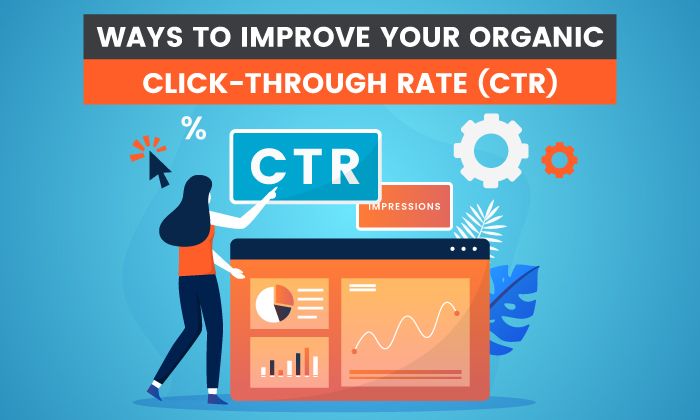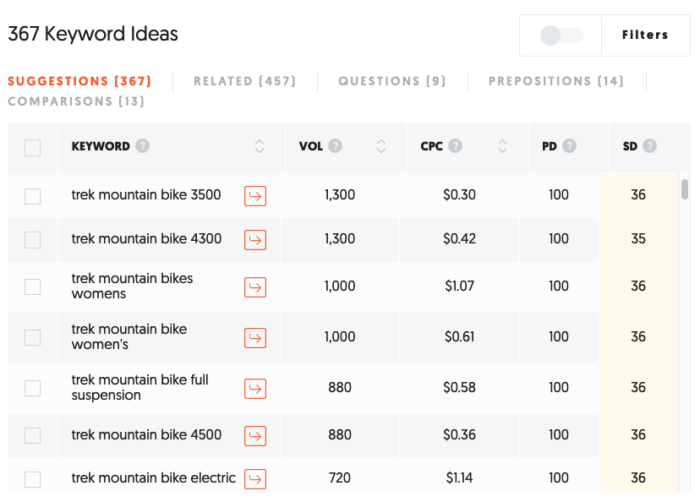18 Ways to Improve Your Organic Click-Through Rate (CTR)

Many times, marketers focus their SEO efforts entirely on discoverability.
They want to tick that careful balance between keyword optimized and “keyword stuffed,” but here’s a secret: being on the first page of search engine results pages (SERPs) won’t do you any good if searchers aren’t interested in your content.
Instead of focusing all your efforts on creating local SEO content to bag that top spot, you need to understand what turns searchers into readers, and readers into customers, through first improving your organic click-through rate (CTR).
Why Should You Care About Your Organic CTR?
Organic click-through rate refers to the percentage of users who click on a search engine result. In this case, that result would be your URL. While it’s primarily dependent on ranking position (the more people that see your content, the higher chance they’ll click), it is also influenced by a variety of other factors.
If you focus your efforts on improving organic CTR, you can also improve your Google ranking. When URLs are being frequently visited, the search engine algorithm will consider your page to be valuable and relevant to future queries containing your content keywords.
18 Ways to Improve Your Organic CTR
Now that you know what organic CTR is and why it’s important, let’s dive into how you can improve yours.
See How My Agency Can Drive Massive Amounts of Traffic to Your Website
- SEO - unlock massive amounts of SEO traffic. See real results.
- Content Marketing - our team creates epic content that will get shared, get links, and attract traffic.
- Paid Media - effective paid strategies with clear ROI.
1. Use Long-Tail Keywords
One of the first ways you can boost your organic CTR is by using long-tail keywords—especially in your headings and title tags. Long-tail keywords are highly descriptive and, as a result, they match your content to search intent.
When users see a descriptive long-tail keyword relevant to what they’re looking for, they’re motivated to click on your URL as they’re confident your post will contain the information they’re looking for.
How do you find long-tail keywords that meet user intent?
Using keyword research tools like Ubersuggest will help. Simply plug in your seed keyword in the search bar and click “search.” Next, click on the “Keyword Ideas” in the left sidebar.

All that’s left is to select the keywords that are relevant to your post, and include them in your new content.
2. Writeffective Meta Descriptions Another strategic way of improving your organic CTR is to write effective meta descriptions. These are the snippets of text that appear below your title tag in the SERPs. An effective meta description informs users what your page is about and also compels them to click through to your post.
Again, your keywords will come in handy here. Use them to show users that your article solves a problem they’re needing answers for. Other ways of optimizing your meta description include:
- Answering questions: If you can answer your users’ questions in the meta description, you’ve won half the battle driving your organic click-through rate up.
- Make it specific and relevant: You only have 160 characters to craft a meta description. That’s why you must make yours as specific and relevant as possible.
- Powerful language: Use persuasive and powerful language, such as emotionally charged words to elicit strong responses associated with your post to improve your CTR.
Meta descriptions shouldn’t just be a product feature—turn it into an elevator pitch to convince users you have the content and solution for them. If possible, you can also add a CTA (such as “learn more” and “find out how.”)
3. Implement Structured Data
Implementing structured data is a great way to “speak” to search engine algorithms. You can do this by using Schema.org to change your content into code that search engines can easily process. This will help them display rich, interactive search results. These are commonly called rich snippets (which we’ll talk more on later).
Text
1. Use Long-Tail Keywords
2. Write Effective Meta Descriptions
3. Implement Structured Data
4. Create Posts With Images
5. Use Descriptive URLs
6. Simplify Your Title Format
7. Localize Your Content
8. Use the Listicle Format
9. A/B Test Headlines on Social Media
10. Use Yoast Preview (in WordPress)
11. Use Google Ads to Preview (Other CDN)
12. Identify CTR Winners and Losers
13. Optimize Site Speed
14. Utilize Rich Snippets
15. Activate Breadcrumb Navigation
16. Leverage Google Analytics Reports
17. Build High Converting Landing Pages
18. Use Heatmaps to Improve Site Clicks



No comments:
Post a Comment